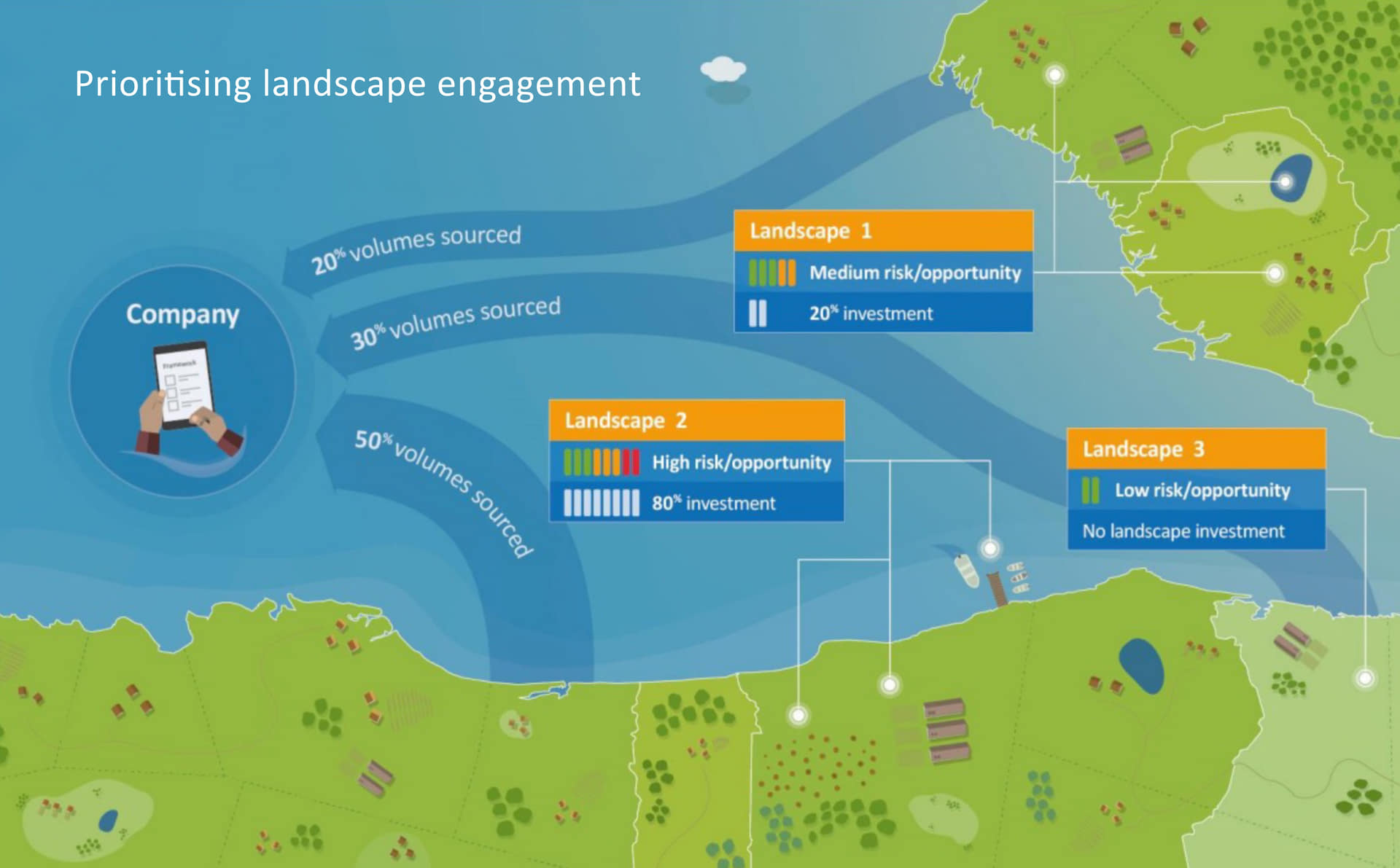STAGE OF INVESTMENT
COMMITMENT
Alongside a company’s work to improve sustainability within their supply chains, it is important to invest in initiatives that take a holistic approach to improving environmental, economic and social factors for the long-term and can improve future sourcing security in the region. Making a commitment is the first stage to achieving landscape or jurisdictional scale outcomes.
This section highlights the operational considerations of pre-requisites, measurement and claims, that particularly apply when making commitments to landscape or jurisdictional scale actions and outcomes.
Pre-requisites
As laid out in ISEAL’s Effective company actions in landscapes and jurisdiction guiding practices paper, companies first need to determine where and to what extent to engage. Companies can prioritise which landscapes or jurisdictions to engage in based on where they are potentially well-placed to have positive impacts. Determinants include: the existence of collective action initiatives, a company’s sourcing footprint, current and future sourcing risks, and the presence of high social or environmental values and threats to these values.
Prioritising company engagement in landscapes and jurisdiction

Measurement
The goal of all landscape monitoring systems is to have good quality, consistent, validated data about actions taken and landscape-scale performance change over time. Monitoring is a shared responsibility that engages companies, local governments and other stakeholders and is an integral part of any landscape investment. Companies that invest in landscape initiatives have the following monitoring responsibilities, with some particularly relevant to the commitment stage of a company’s landscape investment.
Relationships between landscape monitoring system elements
Claims
Commitment claims are about performance targets that a company aims to achieve. Commitments can be generic, referring to a company’s strategic goals or high-level pledges, or specific, referring to a sector, geography or product category. In the context of landscape and jurisdictional action, commitments should ideally focus on what the company aims to achieve in that landscape, either individually or collectively within a multistakeholder collaboration.
- Timeframe in which the commitment will be achieved, potentially also including interim milestones;
- Whether the commitment will be achieved individually or through collective action.
Effective commitment claims should include the following elements:
- Is this a public commitment or an internal commitment (only to key partners and suppliers)?
- Are company partners, suppliers and stakeholders aware and supportive of the commitment?
- Does the commitment have a realistic timeframe?
- Is it clear what actions will be taken to make progress on the commitment and are these actions adequately resourced?
- Is there a system in place to monitor and report progress against the commitment?
When making a commitment claim, companies should consider the following:
Supporting links:
-
• LandScale investment claims: Landscale’s methodology for the validation of investment (commitment) claims made by companies.
-
• Science Based Targets Network (SBTN) - Land methodology: Set land Science Based Targets.
-
• Sustainable Coffee Challenge Commitment Hub: Partners in the Sustainable Coffee Challenge – a multi-stakeholder coalition led by Conservation International – are stating and tracking public commitments to sustainable coffee to help track the industry’s progress toward a set of collectively agreed sector-wide 2025 targets and 2050 goals around 4 key compass points: market, people, coffee, and nature.
-
• WWF’s Forests Forward program: A signature WWF program for corporate action in support of nature, climate, and people that combines support for responsible commodity supply chains with strategic landscape funding.
Please note the supporting tools and resources were developed by different organisations or collaborations and are not collectively endorsed by the organisations participating in this roadmap.